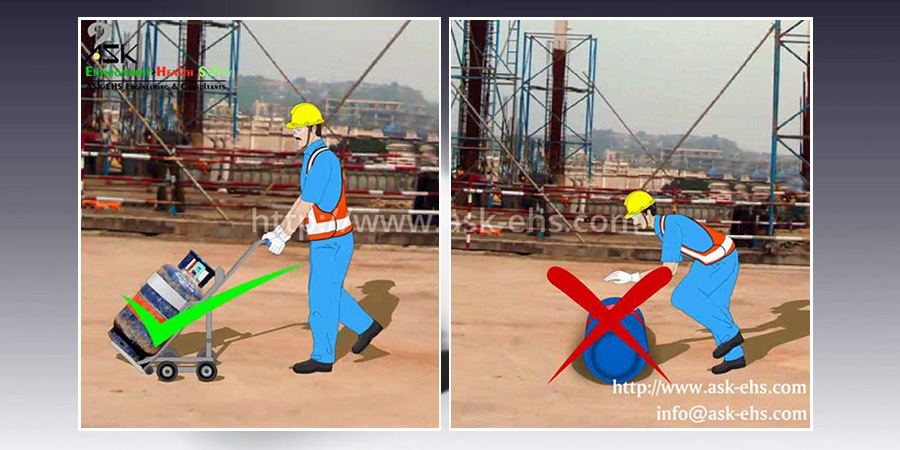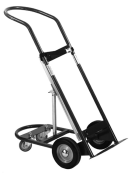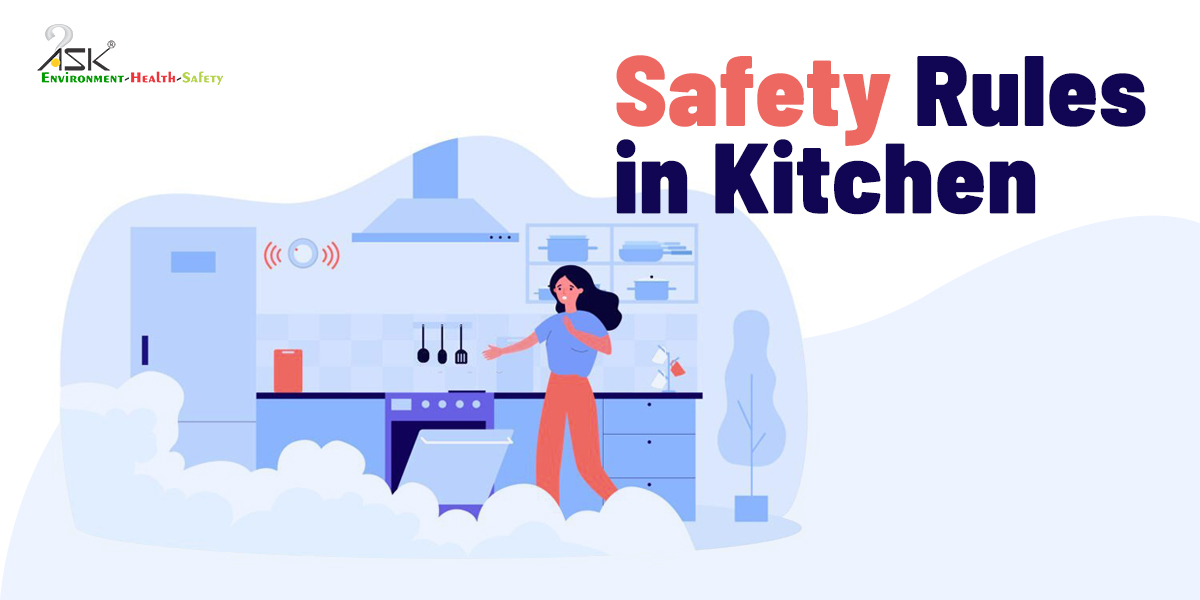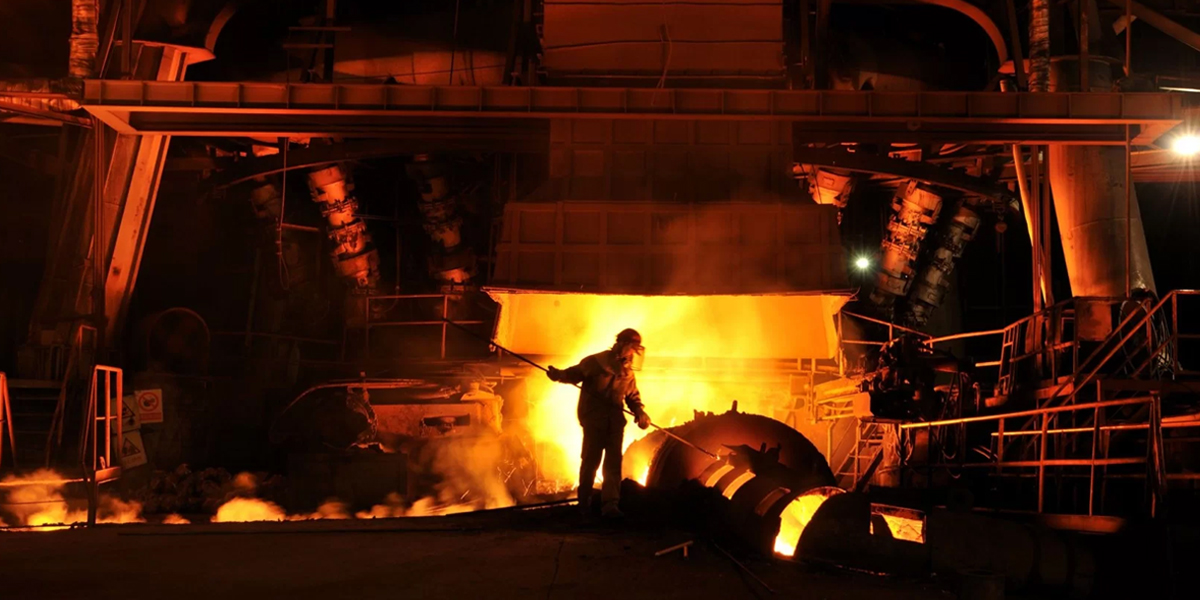Tips for Safe Handling of Pressure Cylinders at Worksite

Compressed gas cylinders are cylinders having contents of chemicals stored under pressure in liquid or gaseous state. Pressure cylinders possesses huge potential energy, which can lead to disasters on enormous scale to life and damage to properties, if not managed with appropriate safety measures during transportation, unloading, storage, handling and use.
In this blog, we will deal with common safety tips for handling of Compressed gas cylinders.
Handling:
Compressed gas cylinders should be only handled by people who are properly trained in safe handling techniques and who are familiar with the associated hazards. Cylinders containing compressed gases are heavy and difficult to move. Improper handling of compressed gas cylinders can lead to falls, strains, sprains, bruises, or broken bones. Mishandling can lead to other hazards such as chemical burns, cold burns, fire, poisoning and explosion, if harmful gases accidentally escape from the cylinder.
Following do’s and don’ts can be useful to prevent injuries caused by the improper handling of compressed gas cylinders.
DO’S
- Move cylinders using a suitable cart or hand truck. (Refer to below figure)
Figure: Typical Cylinder Hand Trucks


- Ensure that cylinders are secured while in-transit, storage or use.
- Using appropriate PPE for cylinder handling is a must. Wear leather gloves, safety glasses, safety shoes and other appropriate protective equipment.
- Leave the valve seal outlet and valve protection cap in place until the cylinder has been secured in place and is ready to be used.
- Close the cylinder valve properly, install the cylinder cap, replace and secure any valve outlet seals while returning cylinders to the supplier.
- Use a cradle or proper cylinder cage to lift a cylinder.
- Take extreme care and restrict the movement of portable cylinder banks on smooth, clean and level stationary surfaces.
- For localized manual movement of a portable bank, use two people. Ensure no one comes in the bank’s travel path. Also, be aware of escape routes should the bank get out of control or start falling. Use a crane, forklift or other appropriate material handling equipment if a smooth level surface is not available to move the portable bank.
DON’TS
- Lift the cylinder by its cap using a magnet or a sling.
- Try to catch a falling cylinder.
- Drop cylinders or allow them to strike with each other violently.
- Use cylinders as rollers for moving material or other tools.
- Drag or slide cylinders, not even for short distances.
- Subject cylinders to mechanical shocks which may cause damage to their valves.
- Tamper with pressure-relief devices.
- Permit grease, oil or other readily combustible substances to come in contact with valves, cylinders or other equipment in oxidizer service.
- Remove any product labels or shipping hazard labels.
- Refill compressed gas cylinders. (This is required to be done only by qualified producers of compressed gases.)
- The above mentioned common safety tips are given for those personnel/ agency who are engaged in moving pressure gas cylinder or their bank. However, the typical work situation /conditions prevailing at the work places must be given specific and technical considerations, to ensure safety.
Would you like to share your views? Send us your comments and suggestions.
In case, any query – Write us: info@ask-ehs.com or Contact +91 261 27 249 94 Ask ehs



What is said is absolutely perfect
OSH details are required.
Thanks for expressing interest and asking for more details.
Handling of compressed gas cylinders at site requires due care, as, negligence may prove too costly and even disastrous.
For more details, kindly refer to ‘Code of Practice for Steel Cylinders having Compressed Gases’ vide IS-8198:2004 (para 13.2 and 13.10 for safe handling)
Are hand trucks mandatory or best practice?
Thanks a lot for showing interest in our blog.
‘Code of Practice, for Steel Cylinders having Compressed Gases’ as per IS-8198:2004 (refer para 13.2 and 13.10), which specifies use of hand trucks having cylinders in upright position, duly chained/secured.
As a part of, official Indian Standard, the above safe measure may be taken as mandatory, and in any case, it is a very safe and good practice.
great post.
I appreciate the tip to use two people when going for localized manual movement of a portable bank. Looking to move some gas cylinders, and I’m quickly realizing that this is something I can’t do myself. Finding a gas cylinder lift company might be a good idea.
I’m glad that you explain how only trained professionals should handle compressed gas cylinders and they should only be lifted with a cradle or proper cage. Using the right equipment would probably be important to avoid accidents that could cause damage or injury. If you need to work with gas cylinders, it would probably be important to make sure you purchase the right lifting and any other types of equipment you need beforehand in order to stay safe.
Hello Larry and Tiffany,
Thanks for your comments and words of advice. We appreciate the interest shown in this post.
Dipal H. Ejardar
Proper maintenance of every thing can increase the life of that thing. Your article is very impressive for me and maybe for every one. Thanks for sharing this article which has lot to read and understand.
Such a great article this can really help a lot of people to decide what is the best for pressure equipment.
Such a great article this can really help a lot of people to decide what is the best for pressure equipment t
I thought it was interesting when you explained that the proper PPE must be used when handling gas cylinders at a worksite. I would imagine that it would be a good idea to work with a consultant to ensure that proper regulations are being followed when it comes to gas safety. It would be interesting to learn more about what consultants can do to help make gas safety a priority.
Nice blog. Thanks for sharing this with us.
Thank you for simplifying a whole lot about this topic. I will have to save this post for easy reference , it’s very helpful.